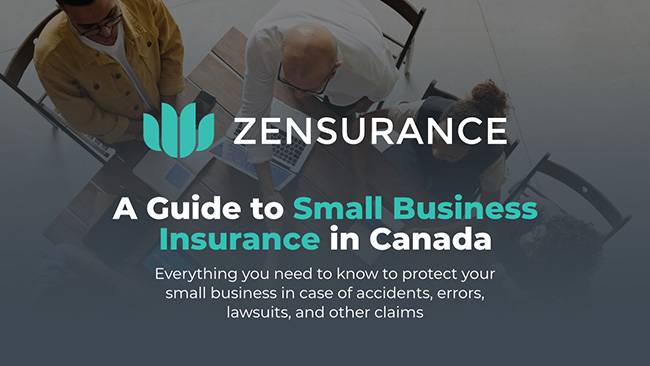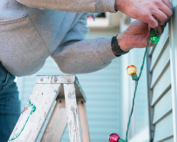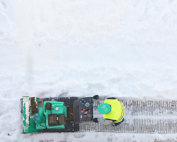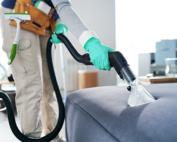General contractors, builders, renovation experts and other skilled trades professionals are crucial to Canada’s construction industry.
Furthermore, contractors are often self-employed or independent small business owners who oversee and manage a construction project from start to finish. Their work involves coordinating various aspects of the construction process, hiring subcontractors, and ensuring a project is completed on time and within budget while adhering to the desired specifications of their customers.
Wherever these hardworking professionals travel to for the various construction projects they have, the transportable tools and equipment they need to do their work travel with them. One significant risk contractors and builders face is vandalism and the theft of their tools and equipment from a job site.

Download Our FREE Insurance Guide
Learn everything you need to protect your small business.
Whitepaper download
"*" indicates required fields
Your email address will be used by Zensurance to provide latest news, offers and tips.
You can unsubscribe at any time.

Related Posts
Sign Up for ZenMail
"*" indicates required fields
Categories
Statistics suggest an estimated $46 million worth of tools and heavy equipment (such as bulldozers, backhoes, and cement mixers) is stolen from construction sites in Canada annually. That highlights the necessity of purchasing contractor equipment insurance. Also referred to as tools and equipment insurance, it is designed to reimburse contractors for damage to or theft of the tools and equipment they own, lease, or rent.
What Does Tools and Equipment Insurance Cover Exactly?
Tools and equipment insurance covers a broad range of items if they’re stolen, lost, vandalized, or damaged by fire, water, or a natural disaster, including:
- Hand tools – hammers, screwdrivers, hand saws, wrenches, chisels, pliers, utility knives
- Power tools – battery-powered or electric drills, circular saws, angle grinders, nail guns, heat guns, belt sanders
- Safety gear – fluorescent vests, hard hats, safety glasses, steel toe boots, safety harnesses, puncture-proof gloves
- Measuring devices – tape measures, measuring wheels, laser tape measures, rulers, compasses, measuring squares
It also covers heavy construction equipment, such as:
- Bulldozers
- Backhoes
- Tractors
- Cement mixers
- Graders
- Excavators
- Loaders
- Trenchers
In general, insurance providers consider any instrument or device valued below $1,500 a tool. An item worth more than $1,500 is considered to be equipment. When applying for tools and equipment insurance coverage, tally up the value of the tools and equipment that you or your small business own, as an insurer will want to know the approximate values of these items.
What Does Tools and Equipment Insurance Not Cover?
Although highly recommended for contractors, builders, renovation experts, handymen, or any professional or small business that relies on using transportable tools and equipment, like a cleaning business, there are some things tools and equipment insurance does not cover. For example, tools and equipment insurance is not designed to protect:
- The building materials you need to complete a project, whether in transit, storage or at a job site before installation. To cover materials, you may require installation floater insurance.
- Tools and equipment that are beyond their useful lifetime.
- Damage due to wear and tear.
- Electrical or mechanical malfunctions (equipment breakdown insurance covers damages due to power surges, electrical shorts, or mechanical breakdowns).
- Deliberately inflicted damage or uninsured damages.
8 Tips for Enhancing Construction Site Security
Thieves and vandals look for low-risk opportunities at job sites with lax security. Proactively preventing theft and vandalism at every job site is vital to protect your tools and equipment, and taking such precautions can help avoid filing a claim or damage or loss and keep your annual insurance premium low.
Here are eight recommended ways to strengthen job site security and ward off thieves. These measures can also be useful if you do need to file an insurance claim:
1. Bolster Job Site Security
Install fencing and lighting around the perimeter of job sites, hang ‘no trespassing’ or ‘beware of dog’ signage, and lock up access to the site. Set up a 24/7 monitored site surveillance system, or consider hiring a security guard to monitor the property and check every individual entering or exiting the area to verify they should be on the property. Have a checklist reviewed at the start and end of each workday regarding what tools and equipment are onsite or taken offsite, when, and by whom.
2. Use an Access Control System
An access control system provides an automated way to control who’s entering and leaving the job site. Furthermore, having only one entrance and exit or access point is best to help manage and monitor people and equipment traffic.
3. Keep an Inventory of Tools and Equipment
Engrave or paint an identifiable mark on all tools and equipment you own that cannot be erased, or that is difficult to remove or hide. Maintain a detailed list of all tools and equipment, including serial numbers and descriptions, and take photos of each item. Digitize the list and store the information in encrypted, secure cloud storage.
4. Remove Unnecessary Valuables From the Site
If an item or piece of equipment is not needed at a particular location or for a specific job, remove them from the site and securely store them elsewhere. Fewer valuable assets kept onsite lowers the likelihood of attracting thieves.
5. Lock Up and Secure Transportable Tools and Equipment Left Onsite
You can’t always haul everything you need for a build or renovation on and off the property daily. It’s necessary to leave some items at the site overnight. In that case, get sturdy, purpose-built security lock boxes and affix them inside a van or in a location out of sight. Being discrete and hiding where valuable tools are stored – especially brightly coloured items – from prying eyes can help serve as a deterrent.
6. Schedule Deliveries to the Job Site
Whether tools and equipment or needed raw materials, schedule all deliveries to a job site and keep track of when they are to be delivered, what those deliveries are, what company or individual is delivering them, and ensure the deliveries are checked, verified, and signed off on by a security guard or a member of your work crew or the site supervisor. Escort all delivery people on and off the job site.
7. Park Vehicles and Mobile Equipment Smartly
Whether leaving business vehicles and mobile equipment like a bulldozer overnight at a job site or leaving them unattended for a few hours, choose where you park vehicles wisely – either in highly visible and populated areas, or utilize your surroundings for added protection by parking up against walls to make it more difficult for a thief to gain access.
Of note: to adequately protect business vehicles like vans, pickups, SUVs, cars, and trailers, invest in a commercial auto insurance policy that includes optional comprehensive coverage, which is designed to cover theft of and vandalism to a vehicle.
8. Install GPS Trackers on Large Equipment
Installing GPS trackers on large, mobile equipment can help the police track and locate any equipment that is stolen from a job site.
How to Get Low-Cost Tools and Equipment Insurance
Shopping around for tools and equipment insurance from various insurers is the best way to find affordable coverage. That’s where Zensurance can help.
Fill out our online application for a free quote. Our experienced, friendly brokers will utilize our proprietary technology to shop your rate to over 50 insurance providers in our partner network and find a low-cost policy. Our brokers will also make recommendations to help you mitigate your risk of theft, vandalism, and loss, and customize the policy to suit your specific requirements. They’ll also ensure you receive a certificate of insurance quickly, so you can get on with building the future.
Related Posts
10 Tips for Closing Your Small Business for the Winter
Are you closing up shop for the winter? Ensuring your property is prepared for winter and your valuable contents and inventory are safely stored is vital. See our tips for how small business owners can shut down operations and keep their assets safe.
9 Ways to Celebrate Small Business Saturday in Canada
Take advantage of Small Business Saturday to raise brand awareness and attract new customers as the holiday shopping season heats up. See our list of how you can do that cost-effectively.
10 Insurance Tips for Women Entrepreneurs
Navigating the complexities of acquiring the right type of liability insurance can be daunting for any entrepreneur in any industry. See our insurance tips for helping women-owned businesses and startups make informed decisions.













